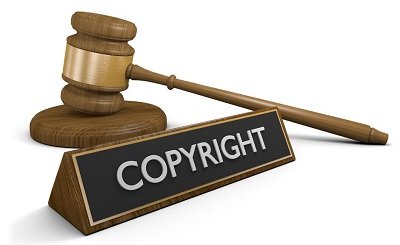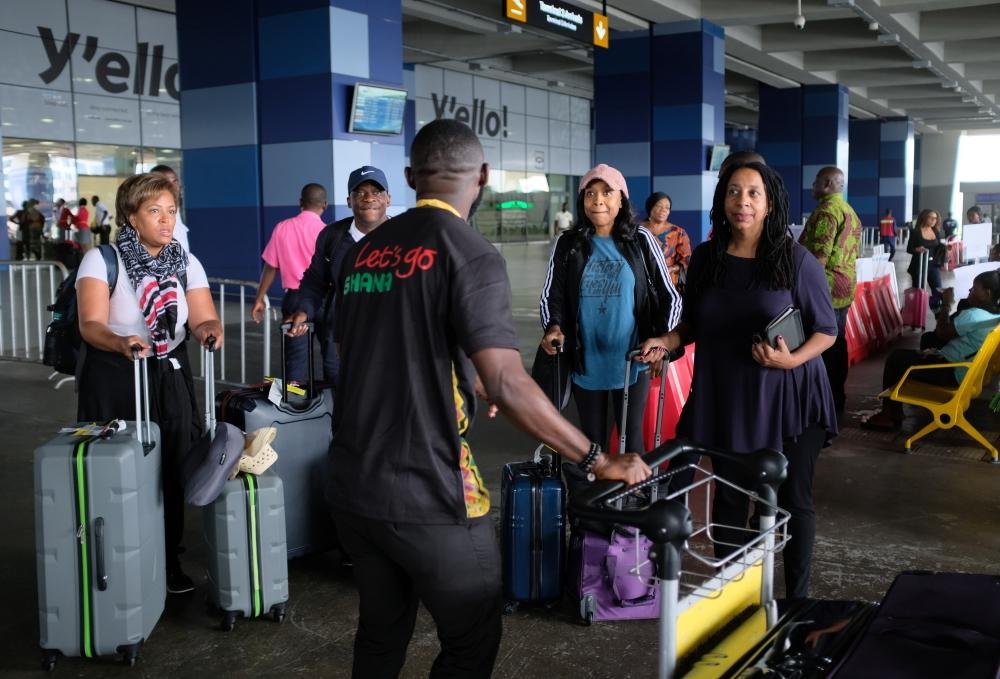Features
Collective management organisations and efforts to protect rights owners (Part 1)

[This piece is culled from a study conducted byMagnus Ebo Duncan (PHD), titled: “Economic
contribution of copyright companies in Ghana”]
Though copyright laws are made to protect rights owners, individual management of rights is practically impossible for certain types of use. The impracticability of enforcing the laws individually – both for the owner of the rights and for the user – creates a need for collective management organisations.
This article presents how the collective management organisations (CMOs) in Ghana are acting in the interest and on behalf of the owners of rights. Ghana’s examples can be emulated by CMOs in other countries.
THE LAW AND CREATION OF COLLECTIVE MANAGEMENT ORGANISATIONS
Article 36(2) of the 1992 Constitution of the Republic of Ghana stipulates as follows: The State shall, in particular, take all necessary steps to establish a sound and healthy economy whose underlying principles shall include:
(a) the guarantee of a fair and realistic remuneration for production and productivity in order to encourage continued production and higher productivity;
(b) affording ample opportunity for individual initiative and creativity in economic activities and fostering an enabling environment for a pronounced role of the private sector in the economy.
These Constitutional provisions are in tandem with the objects of copyright law, which establish appropriate mechanisms to protect the work of creators and give them incentives to produce new works for public consumption.
Section 49 of the Copyright Act, 2005 (Act 690) gives a legal backing for the formation of collective copyright administration societies. The Section provides as follows:
1. Authors, producers, performers and publishers may form collective administration societies for the promotion and protection of their interest.
2. A collective administration society may, acting on the authority of the owner of a right, collect and distribute royalties and other remuneration accruing to the owner.
3. The Minister may, by legislative instrument (L.I.), make regulations for the formation, operation and administration of societies.
In line with the above provisions of the Copyright Act, three (3) collective management organisations have been formed in Ghana. These are:
• Ghana Music Rights Organization (GHAMRO)
• Reprographic Rights Organization of Ghana (CopyGhana)
• Audiovisual Rights Society of Ghana (ARSOG)
The activities and operations of these collective management organizations are regulated by law i.e. the Copyright Regulations, 2010 (L.I. 1962) and the Hon. Minister for Justice has oversight responsibility over the CMOs. The Regulations contain elaborate provisions on the formation, operation and the administration of the CMOs. CMOs are registered as companies limited by guarantee. However, it is the Minister for Justice who grants them a certificate of approval to operate as CMOs.
LEVY ON DEVICES USED FOR THE REPRODUCTION OF COPYRIGHT MATERIALS (PRIVATE COPYING LEVY)
The Copyright Act, 2005 (Act 690) imposes a levy on devices used for reproducing copyright materials. This levy is also known as the private copying levy. The levy, which is collected by the Customs Division of the Ghana Revenue Authority (GRA), covers both the media and equipment used to copy copyright protected materials, which are imported into the country.
The Copyright Regulations, 2010 (L.I. 1962) set out the devices on which the levy is imposed and the procedure for the distribution of the proceeds of the levy to rightsholders. Currently, the levy constitutes the largest source of income for the collective management organisations in Ghana.
GHANA MUSIC RIGHTS ORGANIZATION (GHAMRO)
GHAMRO’s principal roles are to manage the rights of music owners and to issue licences to music users. The membership of GHAMRO is made up of authors/composers and publishers. The organisation’s membership in 2015 was 3,277 and grew to 4,138 in 2016.
Collecting revenues for members
GHAMRO as a CMO, is responsible for ensuring that tariffs are designed to make commercial use of musical works benefit those who compose and publish them. The sources of revenue for the society are revenue from mechanical rights, performance rights, and other sources.

GHAMRO collects fees from users who engage in public performance of music. The organisation has established a vertical hierarchy of the various types of exploitation in which music is performed. Three classifications of exploitation have been made on the basis of the role played by music. These are:
(a) Exploitation where music is essential or indispensable (e.g. radio and TV broadcasting, live performances, disc jockeys);
(b) Exploitation where music creates the atmosphere and is thus necessary (e.g. night clubs, hotels, restaurants, pubs); and
(c) Exploitation where music serves as a background which is not strictly necessary but is favourable to have (e.g. caller tunes used by telecommunication companies).
Currently, the main user categories recorded in the organisation’s books are as follows:
1. Broadcasting stations (radio and television)
2. Hotels
3. Restaurants and bars
4. Night clubs, drinking bars and pubs
5. Financial institutions
6. Fuel retailing stations
7. Telecommunication operators
8. Live performance by various event organisers
9. Shops and malls
10. Barber shops and salons
The organisation has also taken steps to broaden its licensing stream to cover digital music licensing, airlines, road transport unions, secondary schools and churches.
The third source of revenue, which constitutes a very small proportion of total revenue generated, are the token fees charged for the registration of new members as well as for updating their records with new works.
Features
Tears of Ghanaman, home and abroad

The typical native of Sikaman is by nature a hospitable creature, a social animal with a big heart, a soul full of the milk of earthly goodness, and a spirit too loving for its own comfort.

Ghanaman hosts a foreign pal and he spends a fortune to make him very happy and comfortable-good food, clean booze, excellent accommodation and a woman for the night.
Sometimes the pal leaves without saying a “thank you but Ghanaman is not offended. He’d host another idiot even more splendidly. His nature is warm, his spirit benevolent. That is the typical Ghanaian and no wonder that many African-Americans say, “If you haven’t visited Ghana. Then you’ve not come to Africa.
You can even enter the country without a passport and a visa and you’ll be welcomed with a pot of palm wine.
If Ghanaman wants to go abroad, especially to an European country or the United States, it is often after an ordeal.
He has to doze in a queue at dawn at the embassy for days and if he is lucky to get through to being interviewed, he is confronted by someone who claims he or she has the power of discerning truth from lie.
In short Ghanaman must undergo a lie-detector test and has to answer questions that are either nonsensical or have no relevance to the trip at hand. When Joseph Kwame Korkorti wanted a visa to an European country, the attache studied Korkorti’s nose for a while and pronounced judgment.
“The way I see you, you won’t return to Ghana if I allow you to go. Korkorti nearly dislocated her jaw; Kwasiasem akwaakwa. In any case what had Korkorti’s nose got to do with the trip?
If Ghanaman, after several attempts, manages to get the visa and lands in the whiteman’s land, he is seen as another monkey uptown, a new arrival of a degenerate ape coming to invade civilized society. He is sneered at, mocked at and avoided like a plague. Some landlords abroad will not hire their rooms to blacks because they feel their presence in itself is bad business.
When a Sikaman publisher landed overseas and was riding in a public bus, an urchin who had the impudence and notoriety of a dead cockroach told his colleagues he was sure the black man had a tail which he was hiding in his pair of trousers. He didn’t end there. He said he was in fact going to pull out the tail for everyone to see.
True to his word he went and put his hand into the backside of the bewildered publisher, intent on grabbing his imaginary tail and pulling it out. It took a lot of patience on the part of the publisher to avert murder. He practically pinned the white miscreant on the floor by the neck and only let go when others intervene. Next time too…
The way we treat our foreign guests in comparison with the way they treat us is polar contrasting-two disparate extremes, one totally incomparable to the other. They hound us for immigration papers, deport us for overstaying and skinheads either target homes to perpetrate mayhem or attack black immigrants to gratify their racial madness
When these same people come here we accept them even more hospitably than our own kin. They enter without visas, overstay, impregnate our women and run away.
About half of foreigners in this country do not have valid resident permits and was not a bother until recently when fire was put under the buttocks of the Immigration Service
In fact, until recently I never knew Sikaman had an Immigration Service. The problem is that although their staff look resplendent in their green outfit, you never really see them anywhere. You’d think they are hidden from the public eye.
The first time I saw a group of them walking somewhere, I nearly mistook them for some sixth-form going to the library. Their ladies are pretty though.
So after all, Sikaman has an Immigration Service which I hear is now alert 24 hours a day tracking down illegal aliens and making sure they bound the exit via Kotoka International. A pat on their shoulder.
I am glad the Interior Ministry has also realised that the country has been too slack about who goes out or comes into Sikaman.
Now the Ministry has warned foreigners not to take the country’s commitment to its obligations under the various conditions as a sign of weakness or a source for the abuse of her hospitality.
“Ghana will not tolerate any such abuse,” Nii Okaija Adamafio, the Interior Minister said, baring his teeth and twitching his little moustache. He was inaugurating the Ghana Refugee and Immigration Service Boards.
He said some foreigners come in as tourists, investors, consultants, skilled workers or refugees. Others come as ‘charlatans, adventurers or plain criminals. “
Yes, there are many criminals among them. Our courts have tried a good number of them for fraud and misconduct.
It is time we welcome only those who would come and invest or tour and go back peacefully and not those whose criminal intentions are well-hidden but get exposed in due course of time.
This article was first published on Saturday March 14, 1998
Join our WhatsApp Channel now!
https://whatsapp.com/channel/0029VbBElzjInlqHhl1aTU27
Features
Decisions have consequences
In this world, it is always important to recognise that every action or decision taken, has consequences.
It can result in something good or bad, depending on the quality of the decision, that is, the factors that were taken into account in the decision making.
The problem with a bad decision is that, in some instances, there is no opportunity to correct the result even though you have regretted the decision, which resulted in the unpleasant outcome.
This is what a friend of mine refers to as having regretted an unregretable regret. After church last Sunday, I was watching a programme on TV and a young lady was sharing with the host, how a bad decision she took, had affected her life immensely and adversely.
She narrated how she met a Caucasian and she got married to him. The white man arranged for her to join him after the marriage and processes were initiated for her to join her husband in UK. It took a while for the requisite documentation to be procured and during this period, she took a decision that has haunted her till date.
According to her narration, she met a man, a Ghanaian, who she started dating, even though she was a married woman.
After a while her documents were ready and so she left to join her husband abroad without breaking off the unholy relationship with the man from Ghana.
After she got to UK, this man from Ghana, kept pressuring her to leave the white man and return to him in Ghana. The white man at some point became a bit suspicious and asked about who she has been talking on the phone with for long spells, and she lied to him that it was her cousin.
Then comes the shocker. After the man from Ghana had sweet talked her continuously for a while, she decided to leave her husband and return to Ghana after only three weeks abroad.
She said, she asked the guy to swear to her that he would take care of both her and her mother and the guy swore to take good care of her and her mother as well as rent a 3-bedroom flat for her. She then took the decision to leave her husband and return to Ghana.
She told her mum that she was returning to Ghana to marry the guy in Ghana. According to her, her mother vigorously disagreed with her decision and wept.
She further added that her mum told her brother and they told her that they were going to tell her husband about her intentions.
According to her, she threatened that if they called her husband to inform him, then she would commit suicide, an idea given to her by the boyfriend in Ghana.
Her mum and brother afraid of what she might do, agreed not to tell her husband. She then told her husband that she was returning to Ghana to attend her Grandmother’s funeral.
The husband could not understand why she wanted to go back to Ghana after only three weeks stay so she had to lie that in their tradition, grandchildren are required to be present when the grandmother dies and is to be buried.
She returned to Ghana; the flat turns into a chamber and hall accommodation, the promise to take care of her mother does not materialise and generally she ends up furnishing the accommodation herself. All the promises given her by her boyfriend, turned out to be just mere words.
A phone the husband gave her, she left behind in UK out of guilty conscience knowing she was never coming back to UK.
Through that phone and social media, the husband found out about his boyfriend and that was the end of her marriage.
Meanwhile, things have gone awry here in Ghana and she had regretted and at a point in her narration, was trying desperately to hold back tears. Decisions indeed have consequences.
NB: ‘CHANGE KOTOKA INTERNATIONAL AIRPORT TO KOFI BAAKO INTERNATIONAL AIRPORT’
Join our WhatsApp Channel now!
https://whatsapp.com/channel/0029VbBElzjInlqHhl1aTU27






